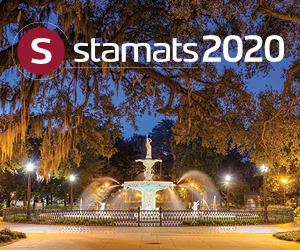
Stamats 2020
September 20, 2019

Marketing teams often have too little time or staff to do everything asked of us. My marketing team at University of Wisconsin-Stout was no exception, so we started searching for tools or processes to make our jobs easier while continually improving our outcomes.
Like many in the field of marketing, we were inspired by the IT field, which is known for developing effective workflows. So, we decided to try incorporating their Agile methodology—a flexible framework based on delivering small portions of a project within a dedicated time period.
The result? Agile marketing. My team has embraced this framework which fosters the commitment of a team empowered to take ownership of the work. By working this way, we’ve reduced stress with managing projects, achieved faster turnaround times, and improved project results.
Like many teams, we were drawn to the Agile framework for its ability to manage the chaos. Team members know at all times what stage a project is in and what needs to be done. Agile marketing increases communication and transparency and helps members work more creatively, autonomously and collaboratively.
Agile teams continuously improve their process by taking a large project and breaking it into smaller tasks with defined expectations to be done within an agreed-upon time frame called a “sprint.”
At the end of each sprint, the team holds an evaluation called a “retrospective” to review and make sure outcomes are as expected. If not, the Agile process provides the flexibility to change course as needed. The framework also measures a backlog of tasks to be done against the team’s speed to help better estimate timelines.
The Agile process allows for fewer opportunities to get stuck because of constant deadlines and feedback. Because you’re building your project in iterative cycles, you’re evaluating results (and the process) along the way.
If you find something isn’t working or information is missing in a small cycle, you can adapt quickly going forward to provide the space for creativity and evolution of ideas.
Learn about Agile marketing at the Stamats 2020 Conference. Register now.
Agile is an umbrella term for a wide variety of process approaches. Three of the most popular types of Agile used in marketing are Scrum and Kanban, plus a combination of the two—Scrumban.
The Scrum Agile process is based on starting with a high-level roadmap that helps team members go in a direction that accounts for stakeholder preferences yet is flexible enough to adapt when certain items require more time.
Through sprint planning, the road map is divided into smaller tasks to be completed during each sprint Each sprint is generally between one and four weeks. At the end of each sprint, there’s a review process with stakeholders to show them a small piece of the project to double check that the project is on the right path.
Each task has a definition of “done” (more commonly known as “user stories”) which helps to ensure each task is clear to keep team members on task and make it easier to test for accuracy.
A team typically is made up of a:
The team determines what they can finish within a sprint and select tasks from within those determined by the PO to be the highest priority. The ScrumMaster ensures the process is followed so the team can work while also managing outside forces (like stakeholder or PO requests).
The Kanban management style is meant to visually see through a project while limiting work in progress. This is typically achieved through a Kanban board—either digitally or with a whiteboard and sticky notes—where each item is a piece of a larger project that is broken down so it can be moved along through each stage of the project.
A Kanban board your team might use to track a project could look like this:
| What Your Kanban Board Might Look Like |
| Backlog: Project tasks not allocated to a sprint yet. PO “grooms” backlog, ensuring enough information is added and prioritizes items. |
| Sprint Backlog: Tasks moved from backlog (priority based) and sized to decide how many they can complete within a sprint. |
| In Progress: Tasks a team member moved from backlog and is actively working on. |
| Testing/Review: Tasks completed, ready to be reviewed by team member, stakeholders or audience testing. |
| Hold: Blocked tasks due to an issue keeping team member from completing them. PO should ensure nothing stays in this column long and eliminate blockers for team. |
| Complete: Completed tasks |
Implementing a Kanban board is a rewarding way to see what you’ve accomplished and where the project stands. It shows you what you have to focus on right now, what’s coming up, and where tasks stand.
This workflow, a combination methodology, includes most of the practices and general framework of Scrum while relying on the principles around Kanban, which sets up the workflow. This is the process my team, and many other marketing teams, have adopted particularly because it transfers well to small teams and processes.
Scrumban empowers teams. They have a say in choosing what tasks to work on. They know what’s expected and what’s important about that part of the project. This can help the team feel more involved and that they have a role in working toward a goal on which they can see progress.
Teams also establish and adhere to a measurable amount of work they can complete in sprints so they don’t get overloaded and so they can focus on the tasks they select.
Agile marketing is a framework that can help us be better marketers. By using this process, we can deliver a better product on time with greater results—without stressing out our already-busy teams.
It’s worked so well for me, that I’ve thrown away my personal “to do” list in favor of this method—and I get nonstop requests from other areas on campus to teach them about this framework.
Ready to think completely differently about how your marketing team approaches projects?
At the Stamats 2020 conference, I’m hosting a discussion about how University of Wisconsin – Stout has benefited from Agile marketing, and how yours can, too.
Join us! Register for the Stamats 2020 conference now.

Luethmers has 25+ years of experience developing and implementing marketing and communications initiatives designed to engage a wide variety of audiences, as well as leading highly productive, award-winning creative teams. She earned both her MBA and B.S. in Marketing/Business Communications from the University of Wisconsin – River Falls and is also Agile ScrumMaster (CSM) and Product Owner (CPO) certified through the Scrum Alliance.
Prior to entering the higher education field in 2010, Luethmers began her career in corporate marketing. She later went on to run her own marketing consulting agency for several years where she worked with clients in a wide variety of fields.
In her current role as the Chief Marketing Officer at the University of Wisconsin-Stout, Luethmers serves on the Chancellor’s cabinet and assists with providing overall strategic direction for the university, as well as university-wide marketing and communications strategies.
She leads a cross-campus Integrated Marketing and Communications team, as well the University Marketing team which has successfully switched to operating within an Agile framework over the past two years.
The team’s transition to Agile has vastly improved their ability to prioritize and manage their workload, generate both more autonomy and transparency, and reduce stress while also increasing productivity and the ability to better meet deadlines. The unit’s recent success with Agile has inspired other areas on campus to explore implementing Agile within their own teams as well.
Ready to Get Started?
Reach out to us to talk about your strategy and goals.